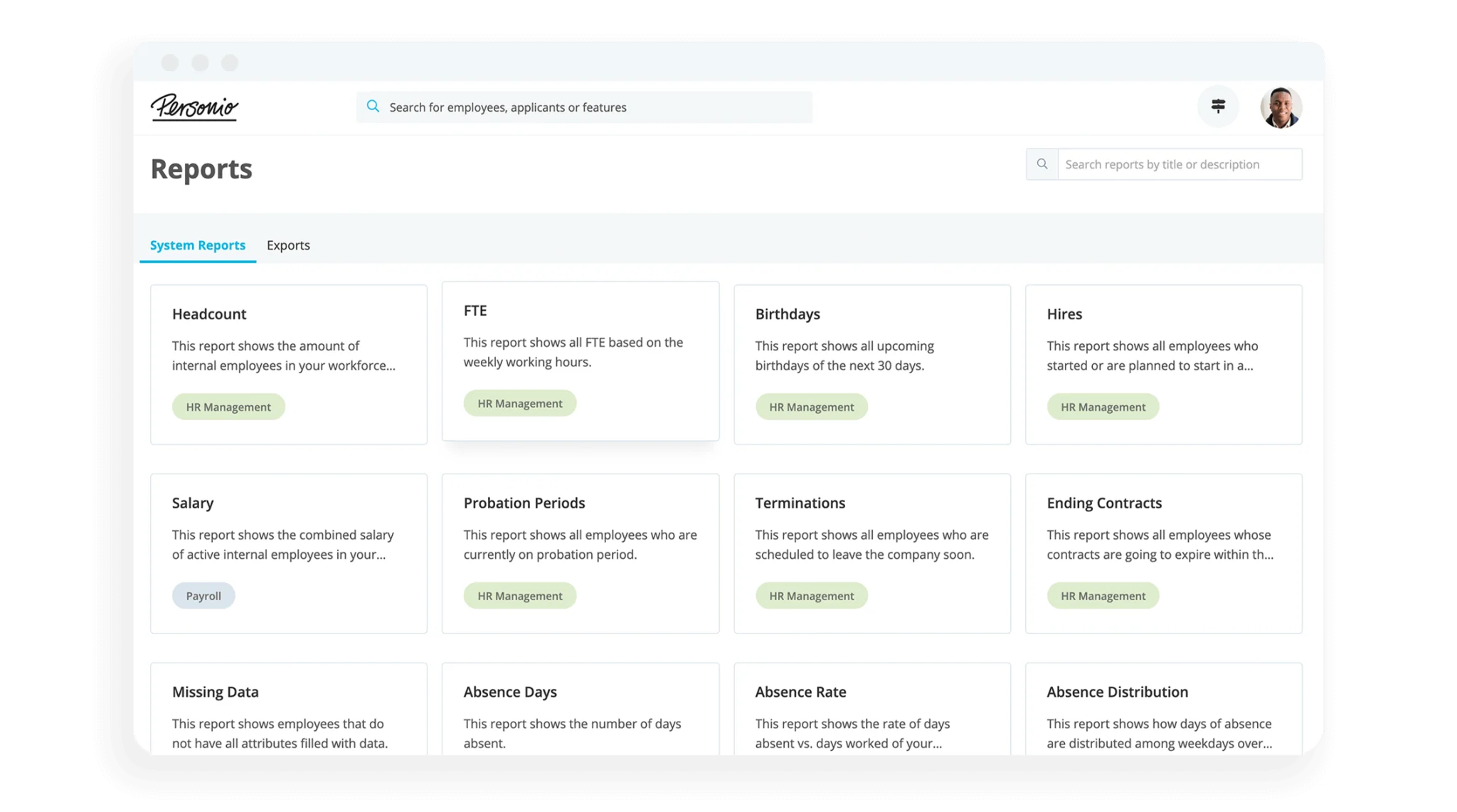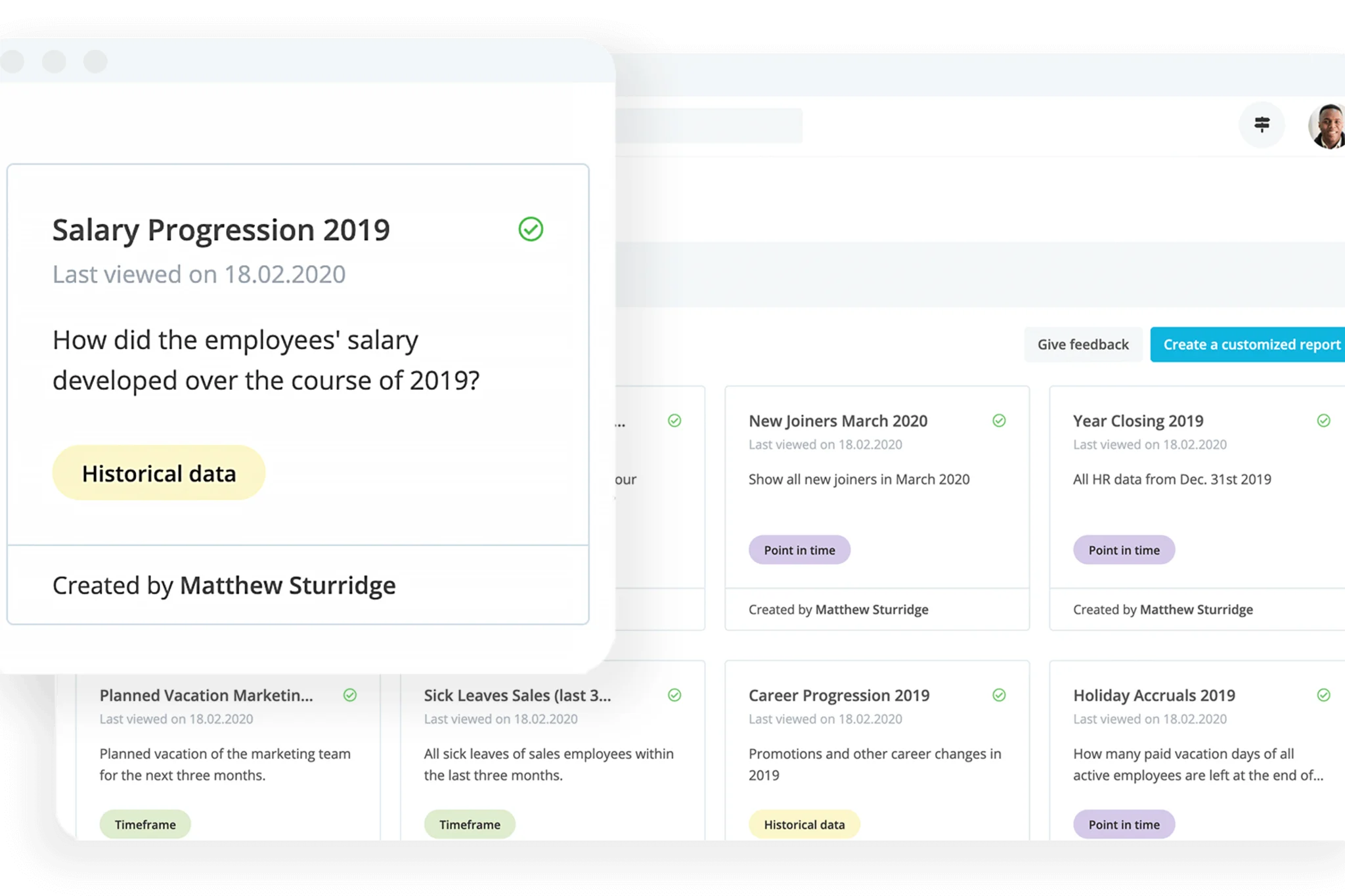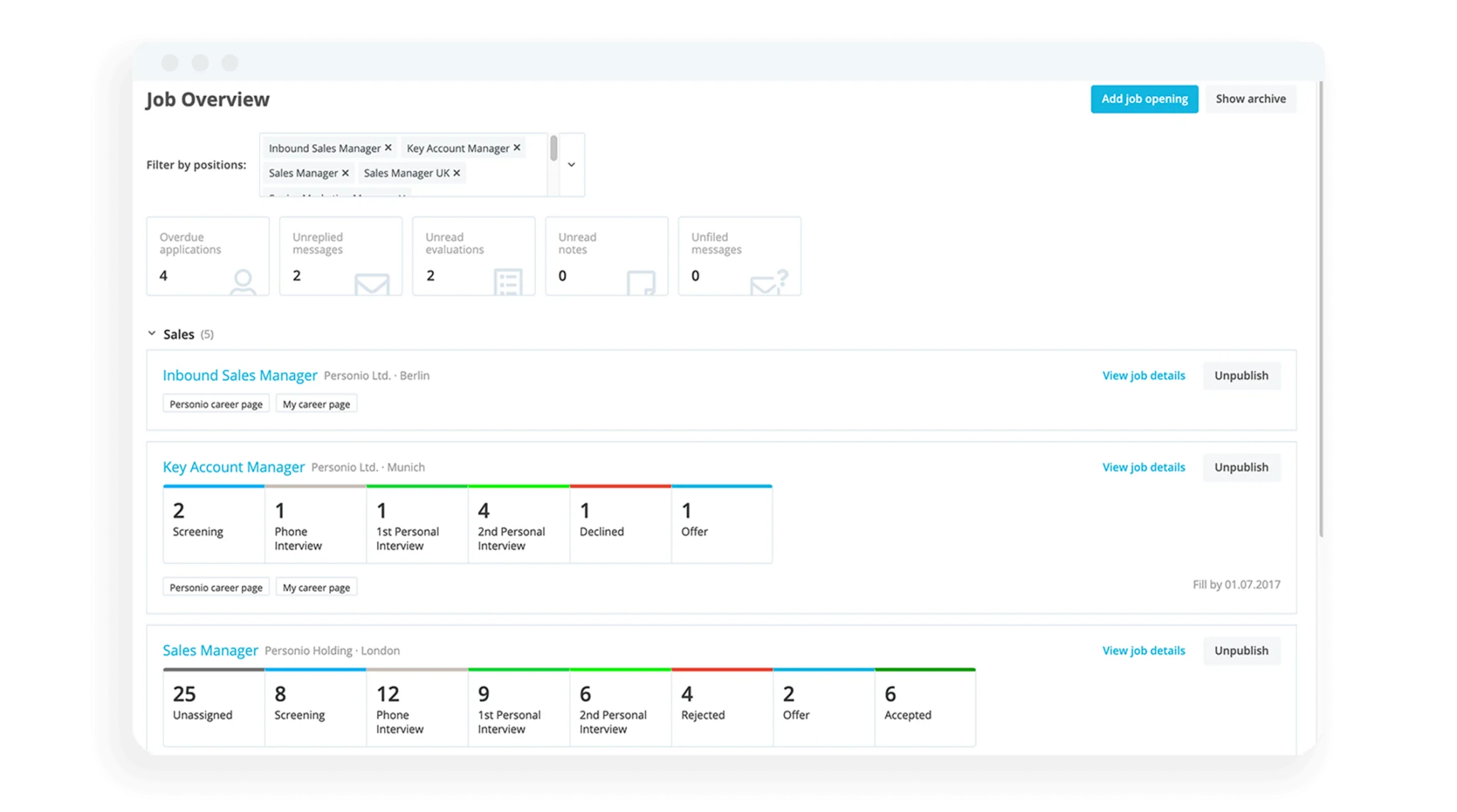The Four Major Drivers Of HR Department Costs

When it comes to overall company costs, HR costs play a large factor. But, the costs of human resources are not always immediately obvious. In this article, we identify the major drivers of HR costs.
In addition to that, though, we also provide suggestions to help your team reduce your HR costs. This way, you can understand both where costs exist and how you can potentially correct them.
Unlock Smoother HiringWhich HR Costs Matter The Most?
There are, of course, some obvious costs. These might include expenditure for office equipment and recruitment, but there are also immaterial liabilities such as employee turnover and dissatisfaction. Translating these costs into figures clearly shows the actual value that HR has in terms of overall company costs.
1. High Fluctuation Rates
Employee resignations are expensive. According to a 2016 fluctuation study, any time an employee leaves, it costs the company about €43,000 (£35,700), of which €6,000 (£4,980) are recruitment costs. This is about the equivalent of a marketing manager's average annual salary.
Interested in learning more about attrition rates or staff turnover? We can comprehensive guides on each, which you can find by clicking this link (for attrition rates) or this link (for staff turnover). Enjoy!
2. Employee Disengagement
Employees who have become so disengaged from work that they have in fact ‘resigned’ mentally can often be more expensive than those who leave. According to a Gallup study, the overall financial cost of employee disengagement may amount to as much as €118.4 billion (£98.26 billion) per year.
This is best illustrated by a model calculation: Let’s say that an employee in sales who earns €50,000 (£41,491) may generate company revenue of, say, €150,000 (£124,444) per year. If they are demotivated or disengaged, they may perform at only 70% of their capacity and consequently only generate revenue of €105,000 (£87,110) per year, therefore costing €45,000 (£37,333).
3. Sick Employees
Whenever individual employees or considerable numbers of employees in specific departments regularly call in sick, it is usually for a reason. Also, employees are increasingly taking sick leave for mental health reasons. According to the 2017 AOK Absences Report, 79% of the employees surveyed stated that their health issues were to do with mental health. In 53% of the cases, this affected their work performance.
A Booz & Company study found that the annual cost to the German economy is €225 billion (£187 billion). Many go to work even though they are unwell, but the study found that they are then less productive and make more mistakes, causing costs amounting to €2,394 (£1,986) per employee (for absences alone these costs are €1,197 or £993 per employee and year). This may not look like much at first glance, but if you have 20 employees coming to work sick, your costs add up to around €47,880 (£39,737).
4. Administrative Inefficiencies
Processing leave applications, entering absences in Excel spreadsheets, organising onboarding and offboarding, etc. – standard processes take up a huge amount of time in HR. Dealing with these processes manually, costs time and money.
HR managers earn an average of €50,000 (£415,137) gross per year, making them a significant HR expense. A Kienbaum study found that HR staff spend 39% of their time on administrative tasks. This is the equivalent of three out of eight hours or €88 (£73) out of €225 (£187) per day. For the year, HR employees spend the equivalent of about €19,500 (£16,191) performing administrative tasks.
What Influence Does HR Have On Costs?
Based on the above, there are two major ways for HR to save costs:
Streamlining administrative processes
Minimising fluctuation/employee disengagement by promoting employee loyalty and motivation
Given the statistics outlined above, costs such as office equipment end up being negligible.
Reduce Fluctuation and Employee Disengagement
Employee resignations and disengagement are two of the major drivers of HR costs. If they are to be reigned in, HR needs to promote employee loyalty. Assuming your company has 500 employees, a reduction of your staff turnover rate by a mere 3% is equivalent to 15 employees retained by the company every year.
Assuming that each time an employee leaves it costs the company €43,000 (£35,698), you can save a whopping €645,000 (£535,469) by retaining these 15 employees per year. That in mind, the two decisive aspects of employee loyalty are personnel and management development.
Personnel Development to Minimise Fluctuation
Personnel development can take any number of forms, with seminars and coachings being just one pathway of continuing education and training. If the 15 employees from the example above are provided with a personnel development budget of €1,500 (£1,245) per person, the resulting aggregate investment would only amount to €22,500 (£18,692). Compared to the costs of fluctuation (€645,000 or £535,840), this is no more than a drop in the ocean. However, such an approach requires professional performance management.
Poor Leadership Affects Employee Loyalty
Managers also influence personnel promotion and development. According to a Gallup study, 67% of employees only feel weak loyalty towards their companies, a result that was associated with poor leadership qualities at the management level.
But, how should managers change? Based on the 2014 Employee Engagement Index, they need to demonstrate accessibility, competence, and goal-oriented leadership. Let’s break each of these down a bit more:
Accessibility: Managers should always be approachable, including with regard to issues outside work.
Competence: Managers need to be aware of employees’ tasks and projects, delegate responsibilities appropriately and motivate employees.
Goal–oriented leadership: Managers should focus on employees’ strengths and define performance targets and work priorities collaboratively with employees.
This type of leadership promotes a feeling of appreciation and contributes significantly to staff development. In this context, HR is responsible for taking initiative and training managers appropriately.
Again, this type of approach also pays off financially: Assuming that a manager leads a team of ten, it already costs the company €86,000 (£71,445)if only two of these employees resign. Developing leadership qualities in team managers, however, which promotes employee loyalty among all ten team members, incurs costs of merely €3,000 (£2,492) for two seminars/coachings per year.
Reducing Inefficiencies
How can HR employees successfully deal with important strategic and conceptual tasks if they spend 39% of their time on administrative duties? That obviously does not leave enough time – after all, they lose three hours every day! According to a Kienbaum study, the administrative effort in HR should be no more than 15% to 25%, i.e. about 1.2 hours per day.
How does this administrative effort arise, and how can it be reduced? Based on our experience with over 2000 customers, we at Personio, again and again, find that most inefficiencies arise due to manual (paper-based) processes, unnecessary duplication of work, and poor data storage.
These all generate additional work, as one and the same process needs to be completed several times. Using the right software allows you to streamline processes such as leave applications and preparatory payroll accounting.
Automated Processes vs. Manual Routine Tasks
HR employees’ daily to-do lists usually comprise repetitive tasks such as preparing payroll, entering leave, and managing hours worked. If there is one HR employee for about 100 employees, manual processing can take weeks. More often than not it even requires somebody to handle them full-time.
Using HR software such as Personio allows you to automate these processes. In our HR department, there is one person who focuses on payroll accounting and spends about three days a month on payroll for 100 employees.
Our HR employees are no longer required to enter any leave at all, for example, because employees do this themselves via Employee Self Service.
Employee Self Service
HR employees are responsible for keeping personnel files up to date at all times, which involves tasks such as collecting data on leave and hours worked, accessing or searching personnel files, and updating data – for each and every employee. If there are 100 employees, this can be very time-consuming.
With Personio, your employees enter this information themselves so that you no longer need to deal with it at all.
Specifically, this means that you no longer need to chase your colleagues to collect information on absences, for example. At the same time, employees are able to report sick leave or apply for home office work at only about five to seven clicks of a button, taking them less than a minute in terms of time.
Onboarding
Setting up equipment, organising induction meetings and events, and sending out welcome emails: Preparing onboarding processes for new employees manually involves a lot of effort and can take up to a day, depending on how you have designed your onboarding workflows.
However, software such as Personio reduces this effort to a mere 30 minutes (plus general organisation such as scheduling meetings and meeting rooms and setting up workplaces). Why? Easy – many onboarding processes can be prepared and automated. You can additionally define different onboarding processes for each department and delegate these to your colleagues.
Chaotic Lists and Spreadsheets
Managing personnel data in Excel is not only cumbersome and prone to mistakes, but it does also not comply with data protection regulations.
HR needs to check constantly who has access to lists and is able to edit them. If mistakes happen, they are often not identified and either persist, or they need to be traced back, causing additional effort and costing both time and money.
If these processes are digitalised and performed by software, the risk of mistakes is minimised. HR is able to grant different employees specific access rights and always knows who has access to which documents.
How Can You Get Internal Stakeholders On Board?
Why is it that so few companies invest in optimising and digitalising their processes? The greatest obstacle to having HR software implemented is usually internal stakeholders such as managers and the executive. Why invest budget funds in software? After all, it’s worked fine so far. That is a common response to the suggestion to implement HR software.
The problem is that your colleagues only see the tip of the iceberg in terms of HR costs. That is why you as a HR expert need to present them with hard facts to tell them what lies below the surface – ideally in the form of hard numbers.
Present Arguments Supported by Numbers
The most significant cost factors are resignations and employee disengagement, sick leave, and core inefficiencies. If HR employees are to minimise the first two cost factors, they need to invest more time in value-adding tasks such as employee satisfaction, employee loyalty, and corporate culture.
But – these efforts are frequently hampered by inefficient processes, which additionally cost more money.
HR software reduces your administrative effort, but of course costs money, which can put many HR managers (and executives) off. However, if you make an actual comparison, it soon becomes evident that software is in fact much less expensive than manual administrative work.
So, why not present your executive with a cost comparison of working with and without an HR software?
HR Software Cost Comparison
Monthly cost of administrative effort without software: €1,740 / £1,443 Cost of administrative effort with software: €703 / £583 Cost of software: €550 / £456 Total costs: €1,253 / £1,039 Cost savings with software: €487 / £404
The assumption without software:
An HR manager earns an average of €50,000 (£41,487) a year, or about €29 (£24) per hour. If they spend 60 hours on administrative tasks every month (based on 90 employees), this incurs costs of €1,740 (£1,444) if no software is used.
The assumption with software:
For 100 employees, our software costs €550 (£456) per month (for the Professional package). Assuming that HR software reduces administrative effort down to 15% (the ideal value according to the Kienbaum study), the HR manager then only spends 24 hours a month on administrative processes. As a result, the cost of administrative effort is reduced to only €703 (£583). Adding the cost of software, the total costs are €1,253 (£1,040) per month, i.e. €487 (£404) less than without software.
Present Explicit Arguments
Avoid saying: ‘I’d like HR software so I have less work performing administrative tasks.’
Instead say: ‘HR can deliver its maximum benefit for our company’s success if we promote employee loyalty. After all, every time an employee leaves, it costs us €43,000 (£35,682). But to do that I need more time, which I don’t have due to petty administrative tasks. HR software can perform these administrative tasks for me, saving me two hours of time every day.’
Drive HR Costs Down and Business Productivity Up
According to the Global Engagement Database, companies with high levels of employee loyalty are 22% more successful than their competitors.
Investing in employee loyalty, therefore, has two-fold financial benefits for your company: Your employees will be more productive, and you save costs incurred from employee fluctuation or disengagement. However, this requires HR to focus on a clear strategy, which in turn requires HR employees to eliminate time-consuming, unproductive tasks.
Software that allows you to make your processes more efficient provides a solution to this problem. However, you will need numbers to bolster the argument you present to your stakeholders. This is not about calculating the numbers down to the last decimal – it is rather about reflecting accurate proportions. For example, every time an employee leaves, it costs the company €43,000 ((£35,682). HR software, however, only costs €700 (£581) per month AND benefits the entire company.
Calculate the various factors addressed in this article for your company, starting from the fluctuation rate and its associated costs all the way through to the time spent on administrative tasks. Then present these numbers to your executive.

About Marina Buller
Marina is Content Marketing Manager at Personio and has dedicated herself entirely to HR and recruiting topics. After completing her master's degree in Lund, Sweden, she gained HR insights while working at XING. She now incorporates this experience into her texts - always following Personio's motto of "simplifying HR work".


